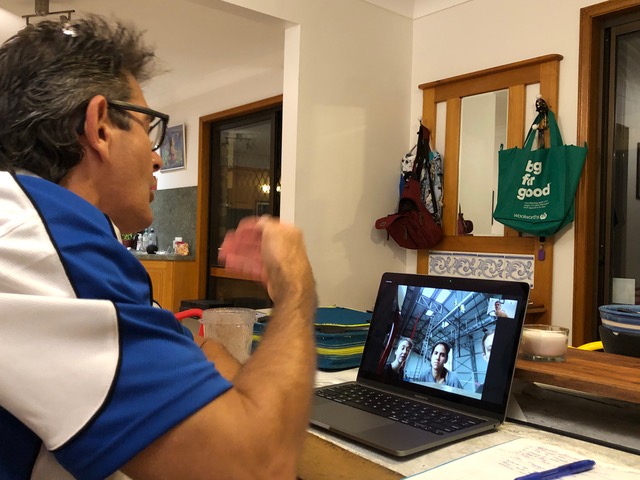As a coach, I have spent many hours spotting enthusiastic students learning anything from basic to high level skills. During my days of “hands-on” spotting, I have learned the painful lesson that I sometimes end up getting more injured than the student, doing the one thing which is intended to remove the risk of injury to the student. The question is: How important is physical spotting? How can I do this when I’m too old or broken to physically spot? How can I spot a student while I’m doing an online lesson? In our current Covid pandemic, hands-on spotting is no longer allowed, so learning to spot without physical contact is becoming a necessity rather than a choice.
Through experience, I have learned to spot with my mouth and not with my hands! Now we all know that “verbal spotting” (other than a warning call) does not exist. However, if you learn the correct vocabulary and you are able to train a student with the correct progressions, this will allow them to build self-confidence, and with your help, reach their goal by using a different pathway. This is a far better long-term solution for that student. The physical action of spotting someone has unfortunate side effects – it encourages the student to become dependent on their coach and less confident in their own ability. This dependency on the coach adds more hours of training to that student in order to wean them from their dependency of physical spotting and slowing the objective of building the self-confidence they need to perform the skill alone.
There are many coaches experiencing unnecessary pain while they physically help weak students get through multiple strength drills as they train to become stronger for straps and other aerial skills. There are solutions to avoid this by teaching them to train using elastic bands or light weights. This encourages the development of the supporting muscle groups so that the skill is shared by multiple muscles groups, helping the student to avoid possible long-term injuries. Cross training and allowing/insisting that your student develops sufficient strength before attempting dynamic drops or holding a difficult pose for a long time is the best solution to the future health of your student, and they will thank you for this.
In some cases, using overhead safety lines when training ground partner disciplines or swinging aerial work is a necessity. This still removes the physical contact, yet helps the students to still feel safe when trying a difficult skill or routine for the first time. Safety line use is out of the question when coaching online, so teaching the students to make use of crash mats set in the correct places and set high enough is the solution. I enjoy coaching and I want to coach until I am old, but the only way I can do that, is to find better ways to train my students and indirectly save myself from being injured. The internet helps me teach students all around the globe from my home, so here’s to a safe and healthy training environment to both students and coaches.










Wonderful article about the current realities of training in circus!
Thanks for your comment Owen. I am trying to get the ISO for my blogs updated, but sadly only one other person has commented on one other blog! I’m trying to improve my Fb and Insta profile to attract more viewers.